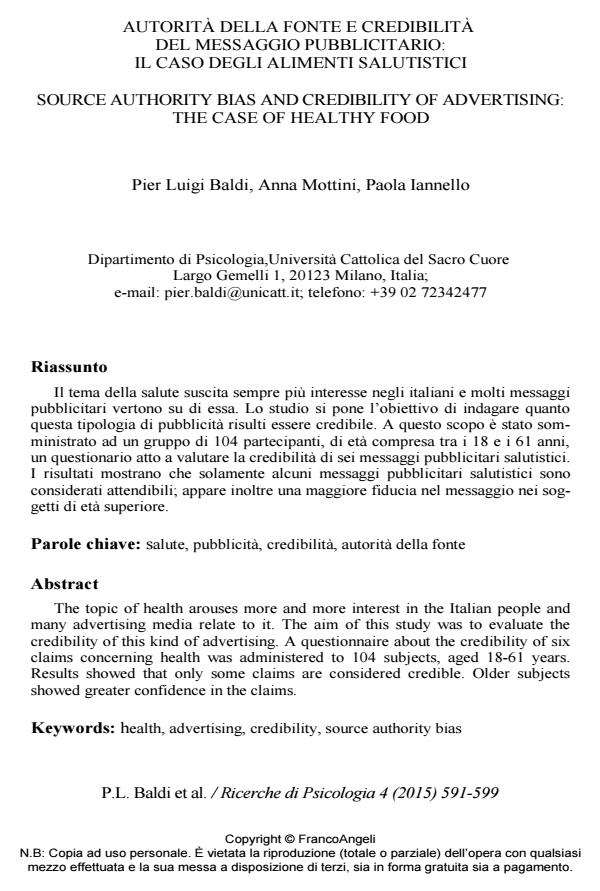Autorità della fonte e credibilità del messaggio pubblicitario: il caso degli alimenti salutistici
Titolo Rivista RICERCHE DI PSICOLOGIA
Autori/Curatori Pier Luigi Baldi, Anna Mottini, Paola Iannello
Anno di pubblicazione 2016 Fascicolo 2015/4
Lingua Italiano Numero pagine 9 P. 591-599 Dimensione file 59 KB
DOI 10.3280/RIP2015-004001
Il DOI è il codice a barre della proprietà intellettuale: per saperne di più
clicca qui
Qui sotto puoi vedere in anteprima la prima pagina di questo articolo.
Se questo articolo ti interessa, lo puoi acquistare (e scaricare in formato pdf) seguendo le facili indicazioni per acquistare il download credit. Acquista Download Credits per scaricare questo Articolo in formato PDF

FrancoAngeli è membro della Publishers International Linking Association, Inc (PILA)associazione indipendente e non profit per facilitare (attraverso i servizi tecnologici implementati da CrossRef.org) l’accesso degli studiosi ai contenuti digitali nelle pubblicazioni professionali e scientifiche
Il tema della salute suscita sempre più interesse negli italiani e molti messaggi pubblicitari vertono su di essa. Lo studio si pone l’obiettivo di indagare quanto questa tipologia di pubblicità risulti essere credibile. A questo scopo è stato somministrato ad un gruppo di 104 partecipanti, di età compresa tra i 18 e i 61 anni, un questionario atto a valutare la credibilità di sei messaggi pubblicitari salutistici. I risultati mostrano che solamente alcuni messaggi pubblicitari salutistici sono considerati attendibili; appare inoltre una maggiore fiducia nel messaggio nei soggetti di età superiore.
Parole chiave:Salute, pubblicità, credibilità, autorità della fonte
Pier Luigi Baldi, Anna Mottini, Paola Iannello, Autorità della fonte e credibilità del messaggio pubblicitario: il caso degli alimenti salutistici in "RICERCHE DI PSICOLOGIA " 4/2015, pp 591-599, DOI: 10.3280/RIP2015-004001